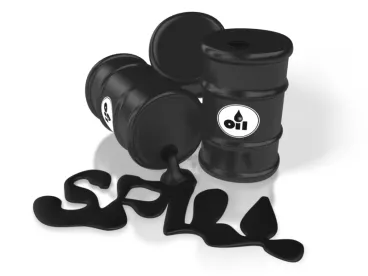Last week, the New Jersey Appellate Division (the “Court”) clarified the relationship between claims arising under the New Jersey Spill Compensation and Control Act (the “Spill Act”) and common law claims, as well as the scope of common law claims available to the State of New Jersey (the “State”), in actions related to environmental contamination. In New Jersey Department of Environmental Protection v. Hess Corp., No. A-2893-18T2, the State, acting through the Department of Environmental Protection, filed a complaint seeking damages, injunctive and declaratory relief under the Spill Act along with common law claims sounding in public nuisance, trespass and strict liability. These claims arose out of the environmental contamination of property formerly operated as an oil refinery and terminal.
Specifically, the State alleged that discharges of hazardous substances from the refinery occurred in 1969 and from 1990 to 1992. A site investigation confirmed the presence of hazardous substances in surrounding surface water, soil and groundwater. In December 1992, the parties entered into a Memorandum of Agreement so that the “[State] could govern [the] investigations and remedial actions at the site.” The State’s complaint contended that, since the time the hazardous substances were discharged, there had been no action on the part of the former operator or current owner to assess or restore the injured natural resources and those resources had been, and continue to be, adversely affected by the release of hazardous substances. Such resources included, but were not limited to, on and off-site groundwater, surface water, sediment, wetlands, and biota.
The trial judge, after hearing oral argument, issued an order granting the former refinery operator’s and current property owner’s motions, dismissing with prejudice the State’s trespass and common law strict liability claims. The trial court’s order also limited the remedy for the public nuisance claim to injunctive relief.
On appeal, the State challenged the trial court order dismissing the common law trespass and strict liability claims. The State also challenged the trial court’s ruling that limited its remedy on the public nuisance claim to injunctive relief. The Appellate Division held that a Spill Act claim may be brought in addition to common law claims. The Court found that the Spill Act expressly and specifically states that the remedies the Spill Act provides are in addition to remedies that were already provided and existing under other statues as well as under common law, subject only to the prohibition against recovering twice for the same damages or cleanup costs. See N.J.S.A. 58:10-23.11v. In other words, the Court recognized that the Spill Act distinguishes between bringing common law claims along with a Spill Act claim as opposed to receiving a double recovery under both, the former of which is considered good legal practice while the latter is barred.
Conversely, the Appellate Division upheld the trial court’s dismissal of the trespass claim. The Court, relying on New Jersey Department of Environmental Protection v. Ventron Corp., 94 N.J. 473 (1983), stated that “trespass requires that the invasion be to land that is in the exclusive possession of the plaintiff.” In this case, the land and/or waters in question are held in public trust by the State. Land held in public trust is “on behalf of a second party, the people.” Id. Thus, according to the Court, the land and/or waters in question cannot be said to be in the “exclusive possession” of the State which forecloses the availability of the common law trespass remedy.
The Appellate Division also reversed the lower court’s ruling that operating an oil refinery and terminal is not an abnormally dangerous activity for purposes of imposing common law strict liability. Instead, the Court held that such an operation is an abnormally dangerous activity under State law. In this case, the Court applied the Ventron strict liability test to make the abnormally dangerous activity finding and concluded that the criteria of the test had been satisfied due to the extent of the refinery operations, the proximity of the operations to sensitive waterways and environmental areas, and the level of danger posed by the discharged pollutants allegedly used in the operations.
Finally, in relation to the State’s common law public nuisance claim, the Appellate Division ruled that the lower court prematurely foreclosed the State’s right to potential monetary damages associated with abatement by limiting recovery to injunctive relief.
This decision clarifies, in the context of environmental contamination, which claims may be brought together, who may bring those claims, either a private party or the State, and in what circumstance. The decision also addresses what remedies are potentially available under those claims. However, it remains unclear whether or what portions of the holding are limited to claims brought by the State and which parts apply more broadly to private parties. Specifically, the case clarifies that a party may allege a Spill Act claim along with any number of common law claims, but that party may not recover damages under separate claims for the same harm. The case also clarifies that to bring a strict liability trespass claim, one must be in exclusive possession of the property and property held in public trust by the State does not qualify. The court also clarified how the Ventron strict liability test should be applied in this context. Finally, the court clarified that monetary damages may be available for abatement purposes but did not decide whether such damages were available here.





 />i
/>i

